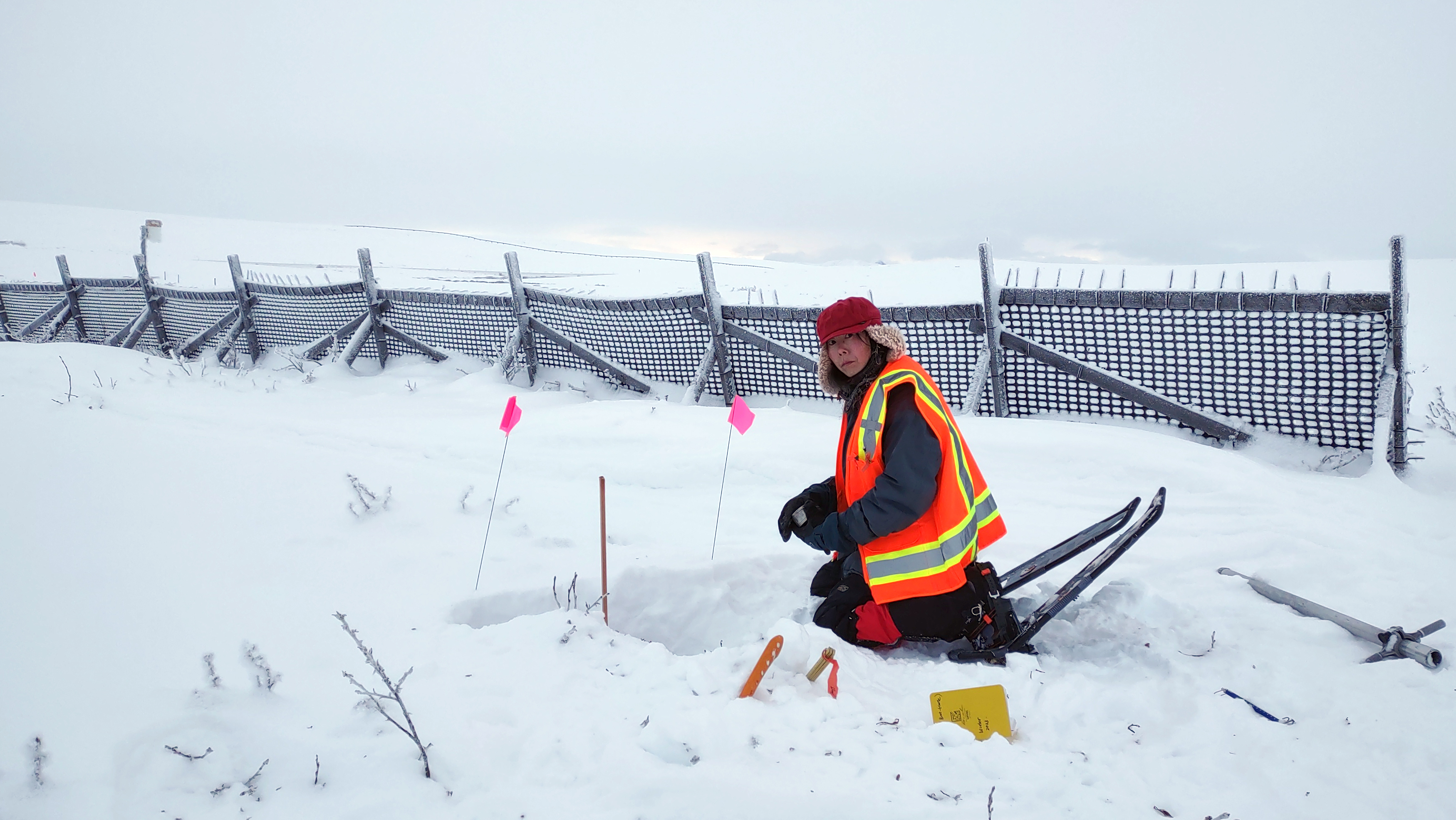Snowier winters bring uncertainty to the tundra’s carbon balance
Haley Dunleavy
907-474-6407
Dec. 12, 2023
This week, scientists from the University of Alaska Fairbanks are presenting their work alongside thousands of colleagues from around the world at the 2023 American Geophysical Union fall meeting. Some of their discoveries are featured here. You can also find out more about UAF at AGU by searching for #UAFxAGU on social media platforms.

Doctoral student Kyoko Okano measures carbon release from snow-covered tundra soils in an 18-year experiment near Toolik Field Station on Alaska’s North Slope in November 2023.
Climate change is bringing a deeper snowpack to Arctic Alaska, and that’s creating an ecological puzzle for the tundra’s globally important carbon balance, according to Kyoko Okano, a student pursuing a doctorate at the University of Alaska Fairbanks.
Okano said a deeper snowpack acts like a blanket to keep tundra soils warmer in the winter time. But this has contrasting effects on how much total carbon is being stored or released from permafrost-underlain tundra ecosystems.
Warmer soils keep microbes active, she said, providing more nutrients for plants to grow in the summer and boosting carbon uptake as a result. But all that microbial activity also releases carbon at a time when they would normally be dormant.
To unravel this snowy mystery, Okano turned to an 18-year experiment that artificially deepens winter snowpack near UAF’s Toolik Field Station on Alaska’s North Slope. She looked at how the resulting higher winter soil temperatures affected monthly rates of carbon release and uptake, measured continuously from 2014 to 2022.
As predicted, Okano found that deeper snow in winter increased both carbon uptake in the summer, especially in July, and carbon release in mid- to late winter. But Okano said it’s not yet clear what will be greater: the boost in summer uptake or increased winter release.
Currently in the third year of her degree with the Department of Biology and Wildlife, she plans to continue her work by inputting her findings into models to scale up predictions.
Also involved in the study were Syndonia Bret-Harte and Eugenie Euskirchen, professors at UAF’s Institute of Arctic Biology.


